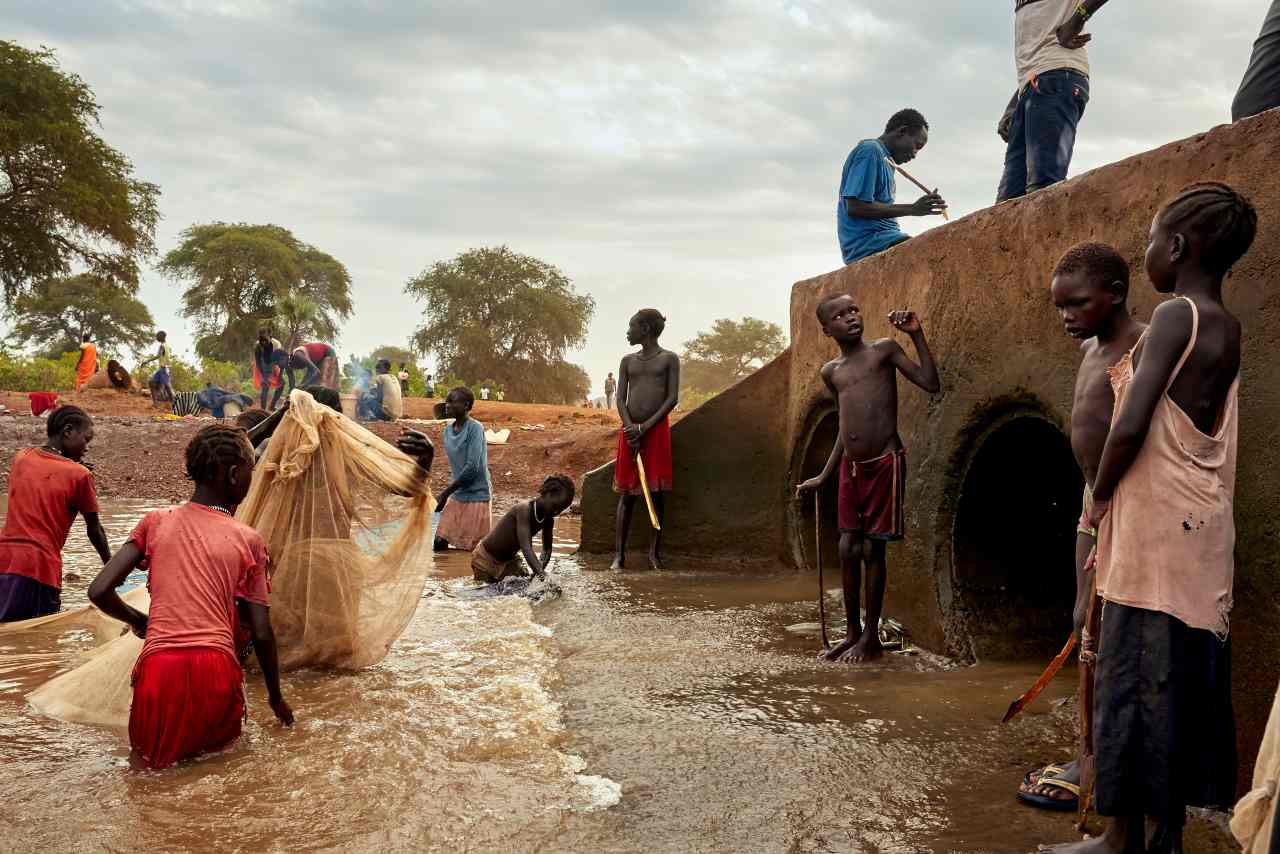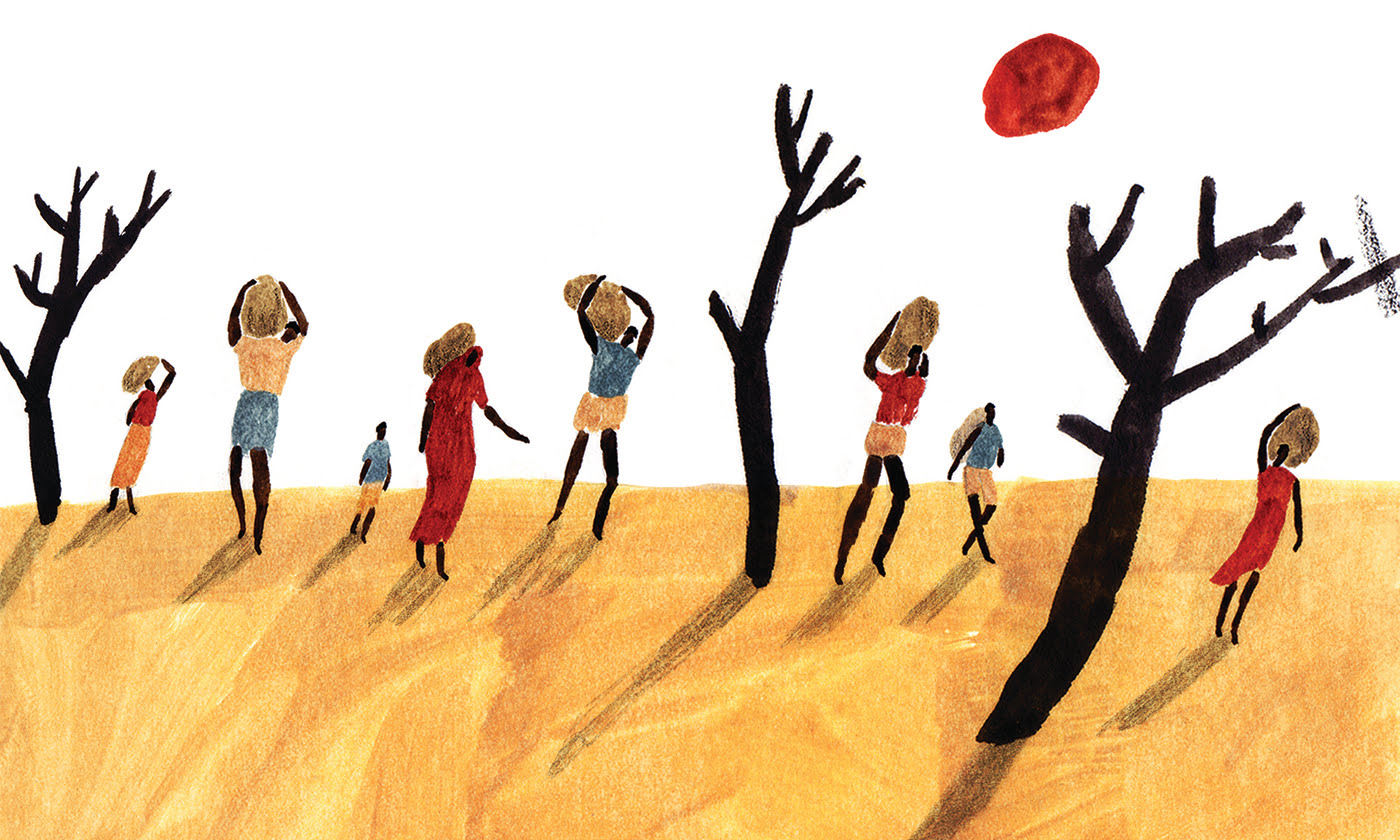Editor’s Note: FII’s #MoodOfTheMonth for July 2021 is Sustainability. We invite submissions on the diverse aspects of sustainability throughout the month. If you’d like to contribute, kindly email your articles to sukanya@feminisminindia.com
Climate change has become a pressing issue that requires immediate attention and action. With the sea on fire, the skies heating up, glaciers melting and oceans acidifying, climate change has catalysed different forms of displacement around the world.
According to statistics published by the Internal Displacement Monitoring Centre, every year since 2008, an average of 26.4 million persons around the world have been forcibly displaced by floods, windstorms, earthquakes or droughts.
The phenomenon of ‘environmental migration’ will turn worse in the coming years, owing to climate change. Experts believe that by 2050, more than 200 million people will be forced to flee their homes.
Who are climate refugees?
There is no clear definition for this category of people although the phenomenon of environmental migration has been in public discourse for quite a long time.
However, United Nations Environment Programme (UNEP) expert Essam El-Hinnawi defines environmental refugees as: ‘… those people who have been forced to leave their traditional habitat, temporarily or permanently, because of marked environmental disruption (natural and/or triggered by people) that jeopardised their existence and/or seriously affected the quality of their life’.

In other words, climate refugees are the people who are displaced within their country or outside it, due to catastrophic weather and natural events that may be climate-change driven. Data on climate refugees is limited, which is why they are called the “forgotten victims of climate change”.
As early as 1990, the Intergovernmental Panel on Climate Change (IPCC) noted that, “The gravest effects of climate change may be those on human migration as millions are uprooted by shoreline erosion, coastal flooding and agricultural disruption.”
There is a clear protection gap of ‘climate refugees‘, who are not mentioned in the 1951 Convention relating to the Status of Refugees. The Convention only covers people who have a ‘legitimate’ fear of being oppressed on racial, religious or national grounds and membership of a particular social group or political opinion, and are unable or unwilling, owing to fear of persecution, to seek protection from their home countries
So far, the national and international response to this full-blown humanitarian issue has been limited, and protection for the people affected remains inadequate. Estimates for international migrants worldwide have continued to rapidly increase in recent years, reaching 258 million in 2017, up from 220 million in 2010 and 173 million in 2000.
There is a clear protection gap of ‘climate refugees‘, who are not mentioned in the 1951 Convention relating to the Status of Refugees.
The Convention only covers people who have a ‘legitimate’ fear of being oppressed on racial, religious or national grounds and membership of a particular social group or political opinion, and are unable or unwilling, owing to fear of persecution, to seek protection from their home countries.
Also read: How Holding Corporates Accountable And Empowering Women Can Alter Climate Change
This definition is not applicable to people displaced for reasons related to the climate crisis. This means, climate refugees cannot easily appeal for resettlement in another country. It also means that they cannot be classified as refugees, even though those who remain are ‘trapped’ in worsening environmental conditions.

So, the question that arises is where they would settle and how they would survive. What will be their identities and legal statuses? It is high time that the issue is carefully looked into and discussed in detail to reach an effective solution.
Climate migration in India: An ignored crisis
The role of extreme weather events in the migration of the population began way early in India’s past. According to reports, close to 1.5 million people in India are classified as internally displaced every year, mostly for climate change reasons.
Without a proper legal or policy framework in place, dealing with such a crisis would be challenging, and politicisation of the issue cannot be ruled out. Climate change poses a significant threat to the socioeconomic stability and population health of India and the countries that border it
From several studies and research reports, it is clear without doubt that climate refugees as a phenomenon exists and is growing considerably, affecting countries worldwide including India.
Climate change might induce two types of displacement and migration in India. Firstly, increased migration is likely within India due to the effects of climate change such as drought, desertification, sea level rise, water scarcity, low food productivity, and melting glaciers.
Secondly, climate change might lead to increased inflow of migrants from neighbouring countries due to the accelerated effects of environmental crisis. If the sea levels in Bangladesh rise, as it has been predicted, there will undoubtedly be large-scale migration from the country towards India seeking refuge. At present, more than 50 million people are affected by climate disaster events every five years.

Without a proper legal or policy framework in place, dealing with such a crisis would be challenging, and politicisation of the issue cannot be ruled out. Climate change poses a significant threat to the socioeconomic stability and population health of India and the countries that border it.
Also read: Living In Denial: Why We Can’t Afford To Deny Climate Change
An inevitable event like climate migration has to be addressed by legislative and policy measures, making sure that the refugees get their due rights of settlement and rehabilitation. The rights of indigenous people over the land and resources must also be ensured so as to avoid future conflicts between the groups.
Furthermore, the global community should endeavour to expand the definition of a “refugee” to encompass the evolving dimensions of the term.
Anoushka M Marak is currently pursuing her Bachelor’s in English from Jadavpur University. She is a passionate cat mom. Born and brought up in the small town of Tura, Meghalaya, she has lived close to nature and shares an intimate connection with it. She is keen on issues regarding climate change. You may find her on Instagram and Facebook
Featured Image Source: Yes! Magazine





Indians need to wake up